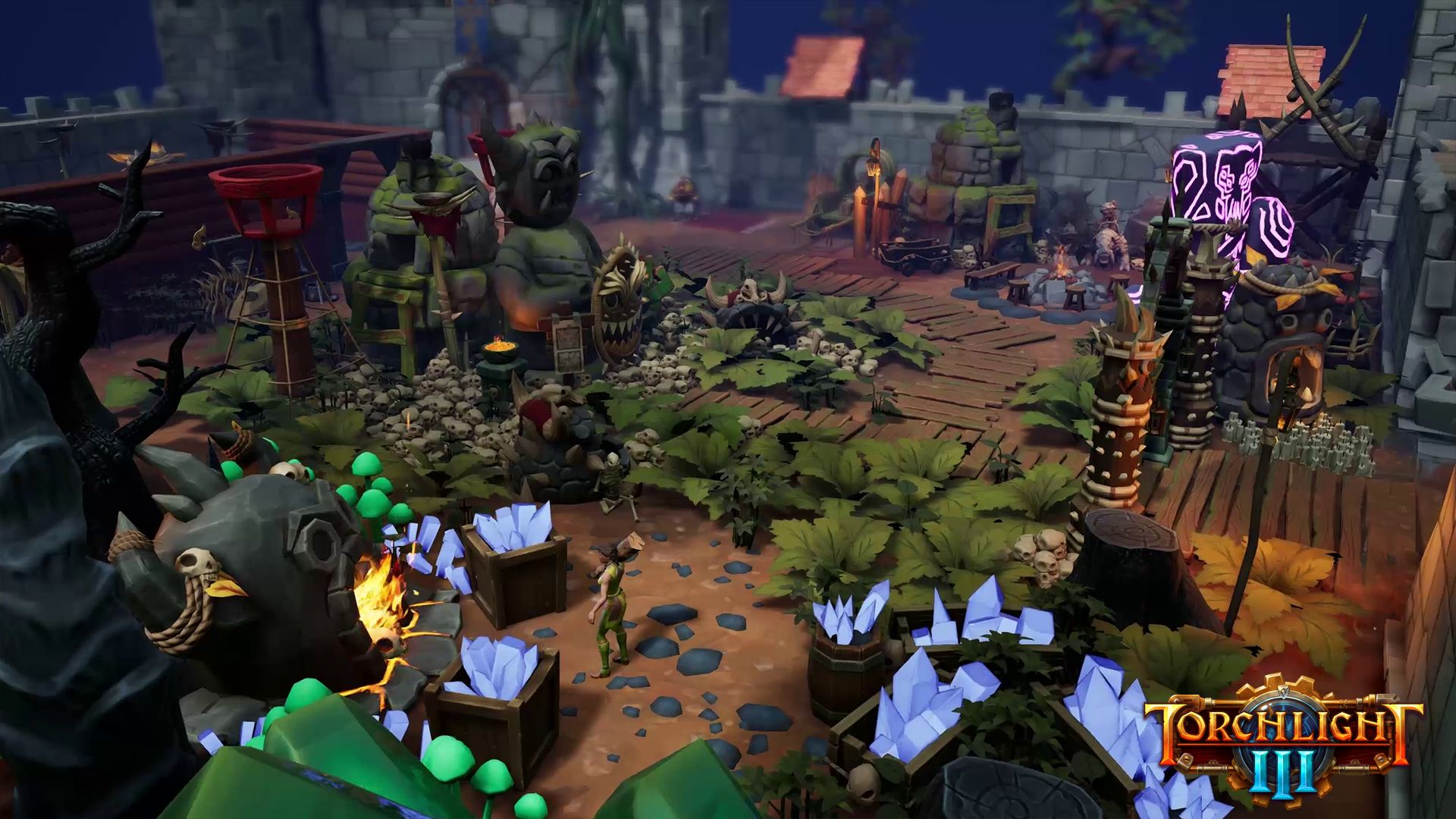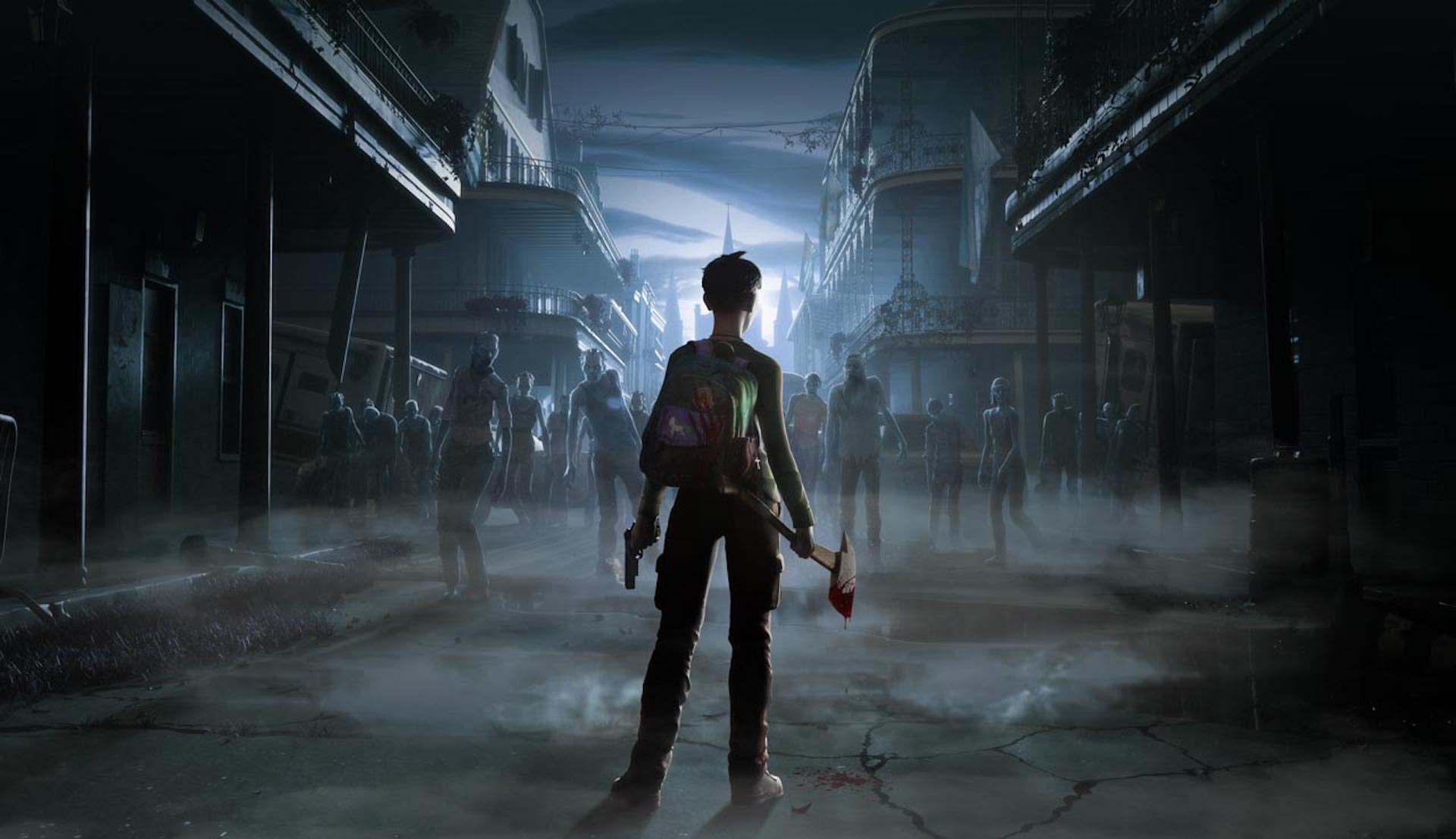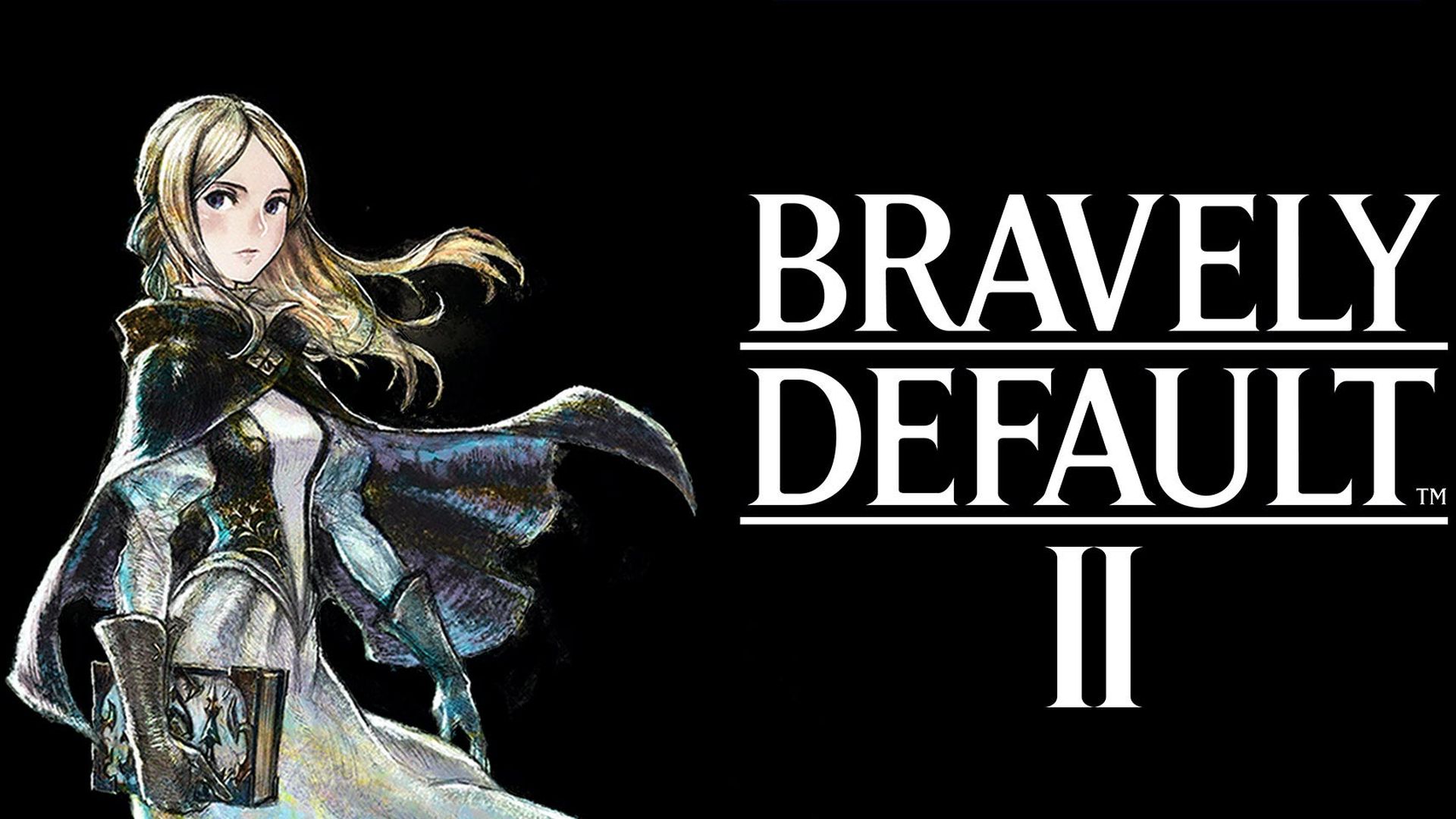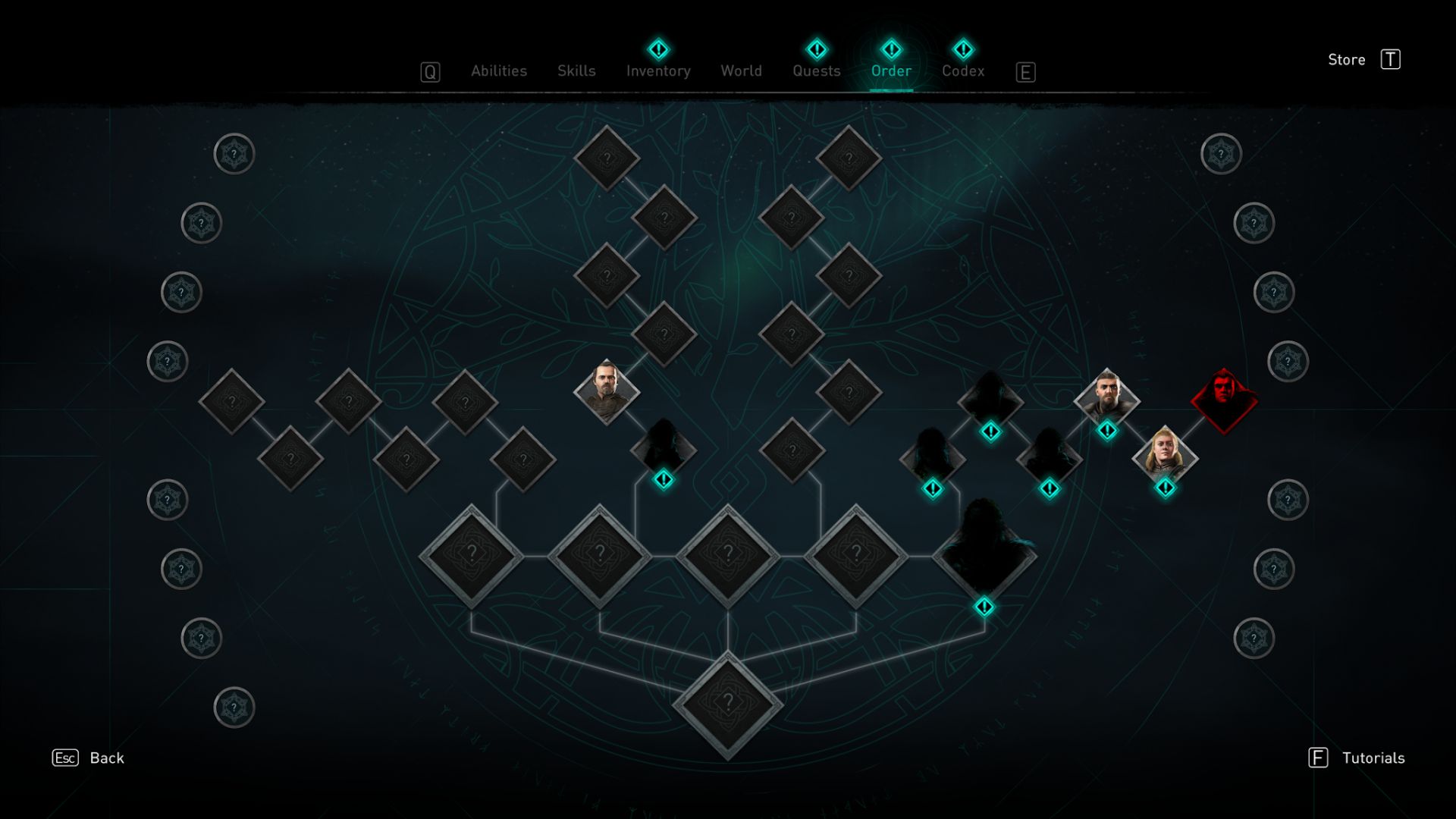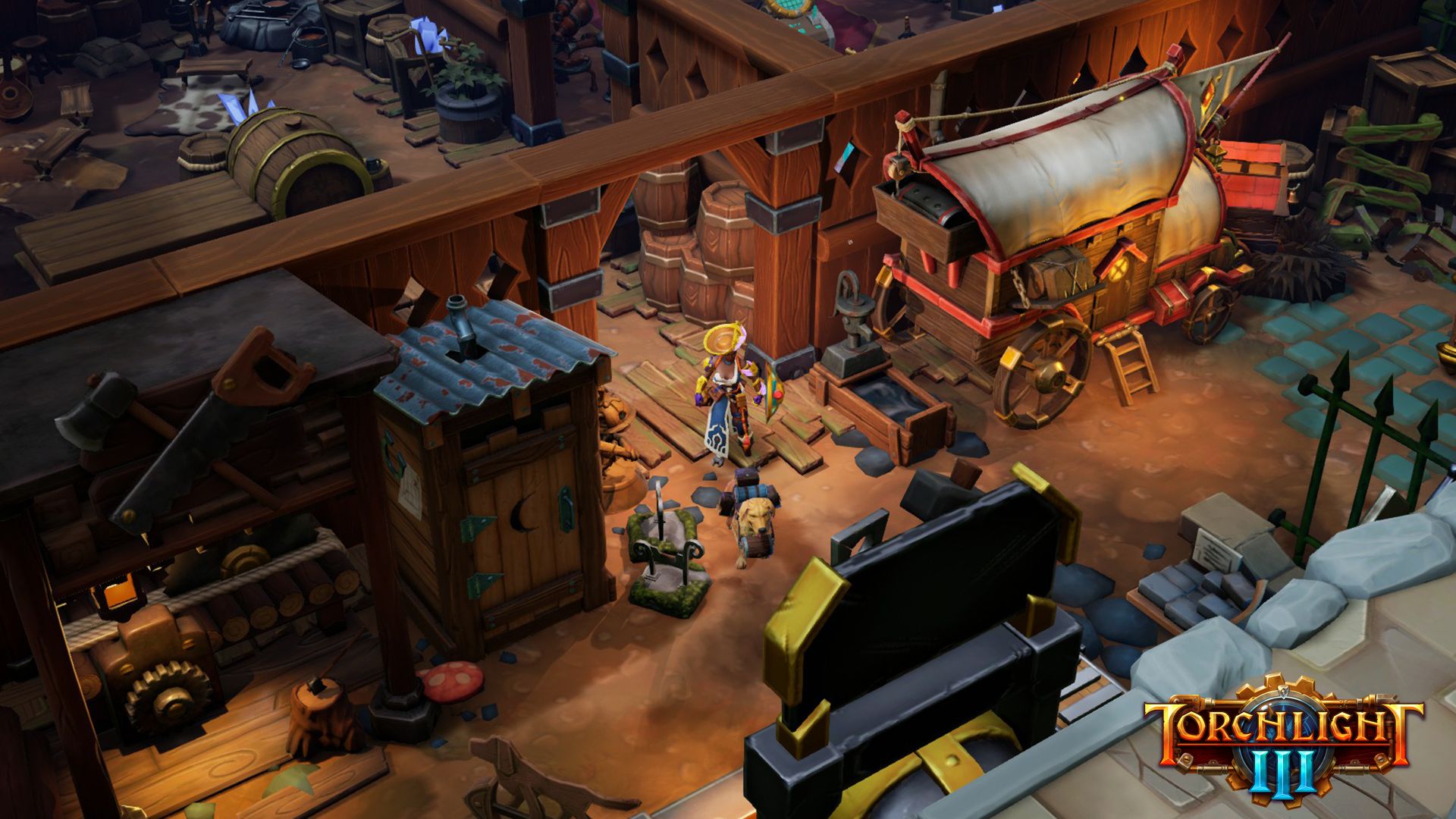
The road to release for Torchlight III has been anything but traditional. Since its predecessor’s initial release in 2012, the follow-up has been labeled an MMO, a dungeon crawler, free-to-play, premium, online, offline, and everything in between. Ultimately, it’s settled on a direct continuation of the series, an online or offline action RPG dungeon crawler in the vein of Diablo whose primary goal is simply get the best loot possible. There are pieces of every stage of its development lying around, but it doesn’t quite seamlessly piece everything together. Its fundamental aspects are passable and often interesting, and while it never takes the step to push itself above and beyond its predecessors, it’s great for a lighthearted, casual grind.
Fittingly for a game that has worked through so many labels, Torchlight III’s gameplay is a combination of various elements of the premium dungeon crawler the series is known to be and the freemium MMO that this game initially was. At its heart, it’s still a straightforward isometric action RPG. You take your created character through an increasingly difficult series of dungeons to complete both the contextual goal of saving Novastraia and the practical one of improving your character with better stats, improved buffs, and, most importantly, better loot. From the outset you choose from one of four default classes, ranging from the traditional archetypes of strength to finesse, balance to technique. Also at the outset you select a relic that powers an additional skill tree and gives you powers like improved healing or fire control.
The gameplay itself is altogether relatively engaging, if not revolutionary. Once you reach a certain level, you can have up to nine unique attacks equipped, but, as is common for a game that allows for so much variation, it’s easy to find a powerful skill and become reliant on it. For me, this came in the form of a massive fiery sword that slammed down on enemies and left a blazing trail in its wake. Not only was it incredibly powerful, especially when upgraded, but it was also ridiculously fun to employ.
"Torchlight 3’s fundamental aspects are passable and often interesting, and while it never takes the step to push itself above and beyond its predecessors, it’s great for a lighthearted, casual grind."
When you look outside of the best skills, though, while there is a good selection of skills that counterbalance each other, including ones for my character that built up heat and others that used heat, it’s almost always easier to turn back to simple short and long-ranged weapons. There’s an inherent decision between spreading your skill points across many skills or focusing in and making one or two as powerful as they can be, and I found that having fewer, more powerful attacks, combined with the basic weapons, was almost always enough to get by.
On the other side of the development cycle coin are the relics of when this game was a free-to-play MMO, relics that are mostly covered but sometimes rear their heads without warning. The entire economy feels made for a free-to-play game, as there’s a lack of any real market and many things cost more than they should. Respawning takes up to 10% of your coins if you don’t want to warp back to town, and there’s almost no market for gear whatsoever. You can buy either a base weapon or gamble on a random item for a set price, but ever since Destiny’s Xur, lacking any form of higher-level gear salesman misses the mark.
New to the series is the fort-building system, which allows you to create and manage multiple forts along the map to gain different stat buffs and store items. In theory, this idea is great for those who want to completely max out their stats, but in practice, this mechanic is entirely avoidable and feels most fitting in a free-to-play experience. In my 15-20 hour playthrough, I only felt the need to come back to a fort a handful of times, as I wasn’t pressed for any small stat buffs it could offer.
"New to the series is the fort-building system, which allows you to create and manage multiple forts along the map to gain different stat buffs and store items. In theory, this idea is great for those who want to completely max out their stats, but in practice, this mechanic is entirely avoidable and feels most fitting in a free-to-play experience."
A more fundamental element of the game that both offers a staple of the genre and gives a reminder of the free-to-play aspect is the continual grinding necessary to progress. Loot provides the game’s almost sole form of reward, and upgrading your gear at every opportunity is both satisfying and essential. You can have up to nearly a dozen unique items equipped at once, ranging from basic weapons to multiple pieces of armor and buffs for your companion pet, and everything comes with its own set of stats and perks.
Naturally, a lot of loot can be compared simply by looking at level or damage numbers, but some enemies are stronger or weaker to different types of damage, from poison to fire or electric, and are better faced with different gear, even if it’s a lower level. However, th grind itself gets a little tedious. It sometimes feels like leveling up happens at a snail’s pace, and, especially near the end of the game, level requirements for certain locations jump quickly, almost requiring you to sit and grind, which forces out the more repetitive nature of the combat and the enemies. While it is possible to make your way through while underleveled, the game gives you ample opportunity and encouragement to grind, but this tends to mute the more interesting aspects of the gameplay.
Along the critical path, the story is broken down into three acts. While the story itself is mostly set to the background, the tone is constantly in the forefront as a lighthearted, humorous, colorful romp through Novastraia. NPCs speak whimsically, enemies have absurd names, and the story is over-the top and generally enjoyable nonetheless as it brings you through a set of somewhat linear locations. Each location has two or three different parts that you’ll visit, and each act is mostly delineated by one particular damage type, most notably the second act’s focus on poison. This means that within each act, you’ll see a lot of the same enemies repeatedly, and, while there is a good number of different enemy types, you’ll become very familiar with them as you grind. Environments, too, can be a little repetitive within the acts, tinted with a very specific color palette that makes each act mostly similar within itself but distinct from one another.
"While the story itself is mostly set to the background, the tone is constantly in the forefront as a lighthearted, humorous, colorful romp through Novastraia."
As you progress the story, you’ll visit virtually every location in the game, and almost every single path ends in a boss fight, as I fought somewhere in the range of three dozen in just story missions, not including ample optional ones elsewhere in the world or in side missions. Boss fights are certainly the most enjoyable parts of the gameplay because they have the highest stakes, and each boss both drops high-level loot and has a boss chest that does the same. Over time, you’ll notice that boss types recur, especially within each act, but they are unique enough between acts for this to not ultimately matter. Taking down massive bosses with a swing of my fire sword was always satisfying, and the loot that came with it was the cherry on top.
Torchlight III is by no means the best or most innovative dungeon crawler in recent memory. It cobbles together pieces of its stages of troubled development, and while many of them work, some clashes are noticeably present. Gameplay is fun in short bursts and when fighting new, major bosses, but the grind often feels like more of a chore than an exciting path forward. The economy, too, feels more like a relic of a free-to-play game than something that should be this barebones in a full-price experience. Nevertheless, while the underlying structural issues diminished the full product, I still enjoyed the romp. Though the aspects of Torchlight III that miss the mark dampen some of its enjoyability, there is enough light that shines through to make it an interesting experience anyway.
This game was reviewed on the PlayStation 4.

